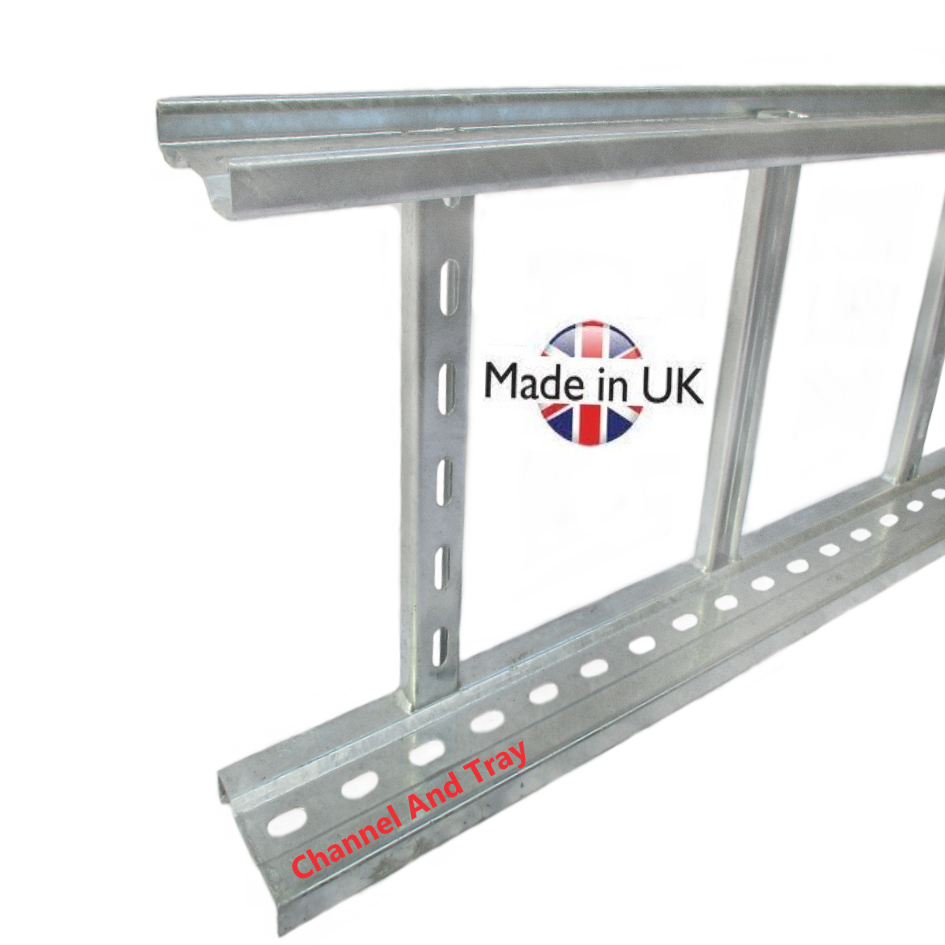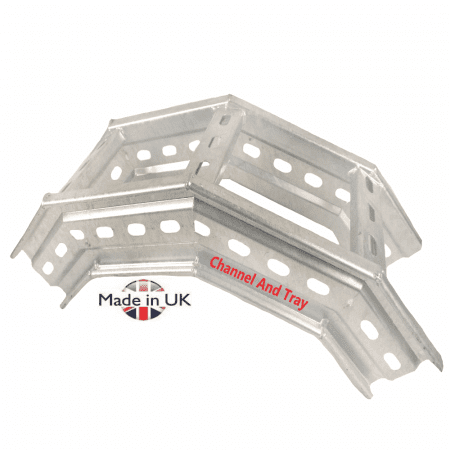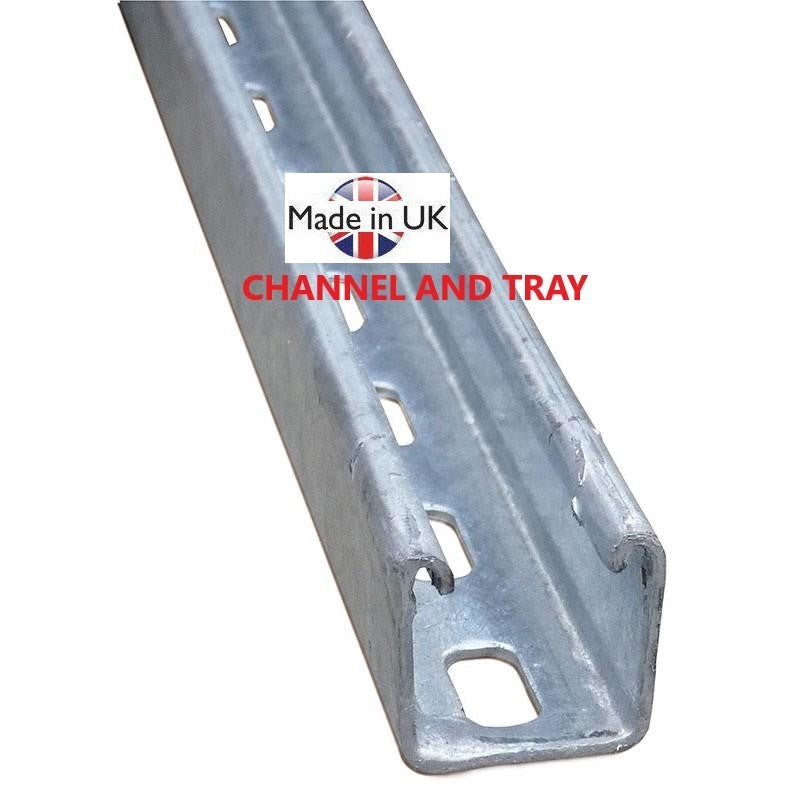Description
Cable ladder is an ideal solution when installing large power cables that need to be supported safely.
Cable Ladder Medium Duty (100mm deep)
Ladders provide free air flow, which is essential to avoid overheating of cables
Hot Dipped Galvanized Steel conforming to BS-EN-61537:2007
Rung spacing is 300mm as standard.
Couplers Sold Separately
For Internal & External Use
A cable ladder is a support system used to organize and support electrical cables, typically in industrial and commercial environments. The ladder is usually constructed from steel, aluminum, or fiberglass and consists of side rails and rungs, providing a secure pathway for cables to be routed safely along a structure.
Cable Ladder Sizes
The dimensions of a cable ladder are commonly referred to by the width of the ladder. The numbers you’ve mentioned — 150mm, 300mm, and 450mm — likely refer to the width of the cable ladder. Here’s a brief description of each size:
1. 150mm Cable Ladder
- Width: 150mm (measured between the side rails)
- Typical Use: This narrower size is ideal for applications where the cable load is relatively light or when space constraints require a compact design. It is typically used for smaller or lower-volume cabling systems.
- Applications: Suitable for small electrical installations, control circuits, or areas with limited space where a compact cable support system is required.
- Capacity: Can typically support smaller cables or fewer cables compared to wider ladders.
- Common Features: Side rails with rungs spaced at regular intervals, typically 300mm to 400mm apart.
2. 300mm Cable Ladder
- Width: 300mm
- Typical Use: A mid-range size, this ladder provides greater capacity than the 150mm version while still maintaining a reasonable profile. It is suitable for standard commercial and industrial applications where the cable load is moderate.
- Applications: Often used in medium-sized electrical systems, including power distribution, telecommunications, and control panels.
- Capacity: Can support a greater number of cables, typically for medium voltage systems or installations requiring medium-sized cables.
- Common Features: Standard spacing between rungs, usually 300mm to 400mm, with side rails that can support heavier cable loads.
3. 450mm Cable Ladder
- Width: 450mm
- Typical Use: This is a wider cable ladder that offers maximum capacity for large or heavy-duty cable installations. It’s designed for applications requiring the routing of a large number of cables or heavy, high-voltage cables.
- Applications: Used in large industrial facilities, power plants, data centers, or areas where extensive and high-capacity cable routing is needed.
- Capacity: Can accommodate a large number of cables, including thicker power cables, high-voltage cables, or bundles of smaller cables.
- Common Features: Typically features wider spacing between rungs, and may also include special reinforcements to carry heavier cable loads.
General Features of Cable Ladders:
- Material: Made from materials like steel (hot-dip galvanized or powder-coated), aluminum, or fiberglass.
- Design: Ladders typically consist of two side rails with horizontal rungs for the cables to sit on. Rungs are spaced at standard intervals (e.g., 300mm to 400mm).
- Load Capacity: Different sizes and materials offer varying load capacities, typically measured in terms of the weight they can support per meter.
- Versatility: Cable ladders can be customized with accessories like junctions, bends, tees, and brackets to accommodate specific installation needs.
Summary of Common Sizes:
- 150mm Cable Ladder: Ideal for light-duty, smaller installations.
- 300mm Cable Ladder: Suitable for medium-sized installations with moderate cable load.
- 450mm Cable Ladder: Best for heavy-duty, large installations requiring the support of extensive or high-capacity cables.
In all cases, it’s important to select the correct size based on the cable load, installation environment, and any applicable industry standards.












Reviews
There are no reviews yet.